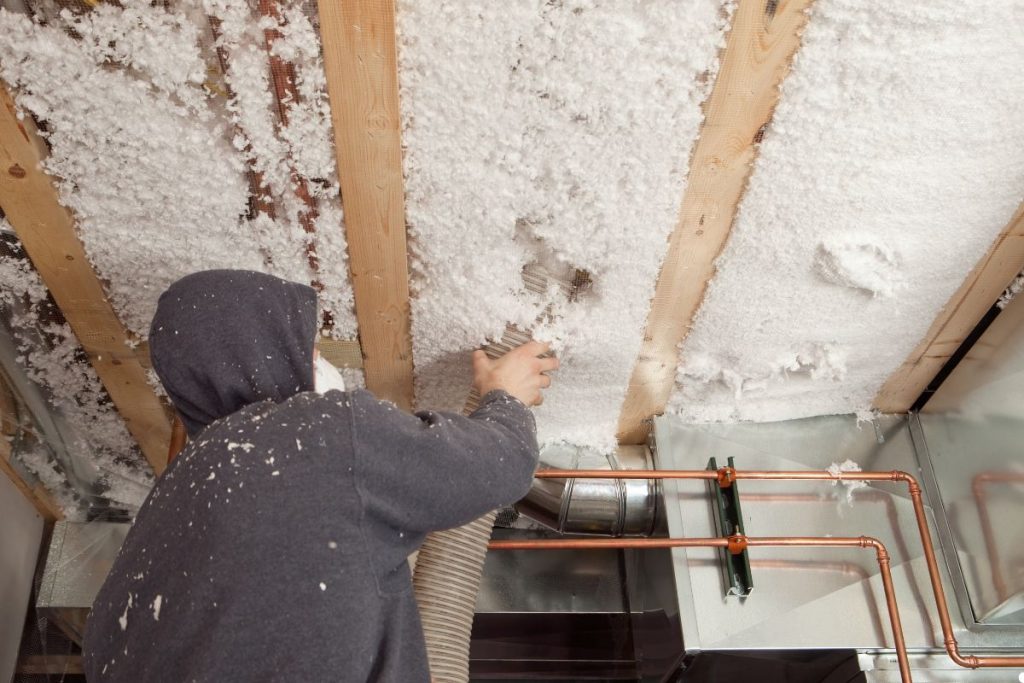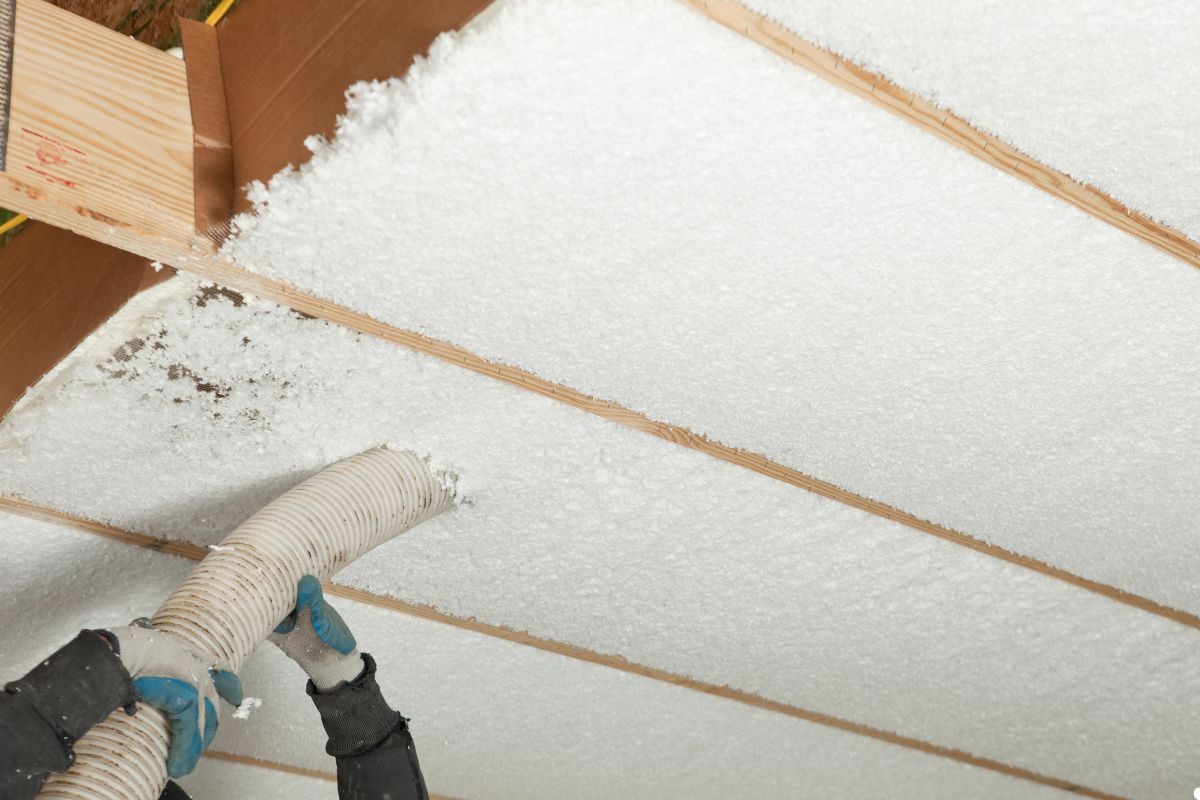
Yes, absolutely! Adding the right type of insulation is a highly effective way to help soundproof your home and significantly reduce unwanted noise. While it might not create a perfectly silent recording studio on its own, insulation plays a crucial role in absorbing sound waves and damping vibrations, leading to a noticeably quieter and more peaceful living environment. It’s one of the most impactful steps you can take towards achieving better acoustic comfort in your USA home. Call us today to learn more about soundproof insulation options and get a free consultation!
Understanding the Quest for Quiet: Noise in Our Homes
From noisy neighbors and bustling street traffic to sounds traveling between rooms within your own house – like loud TVs, footsteps overhead, or appliances running – unwanted noise is a common complaint for homeowners across the USA. This constant background noise, often referred to as household noise pollution, isn’t just annoying; it can impact sleep, concentration, and overall well-being. Many people seek ways to create a more serene home, leading them to explore options like insulation for effective home noise reduction. One of the most effective ways to combat household noise pollution is through proper loft insulation.

How Does Sound Travel Through Your Home?
Understanding how sound moves is key to stopping it. Sound travels primarily in two ways relevant to our homes:
- Airborne Noise: This is sound that travels through the air – think voices, music, barking dogs, or traffic sounds. These sound waves hit surfaces like walls, ceilings, and floors, causing them to vibrate and transmit the noise to the other side.
- Structure-Borne (or Impact) Noise: This type of noise results from direct impacts on a building’s structure – like footsteps on the floor above, a door slamming, or vibrations from machinery. The vibration travels directly through materials like wood studs, joists, and drywall.
Insulation’s Dual Role: Thermal Comfort and Sound Reduction
Most people know insulation keeps homes warmer in winter and cooler in summer, saving energy. But many types of insulation also excel at reducing sound. They achieve this through:
- Sound Absorption: Porous insulation materials like fiberglass and mineral wool have millions of tiny air pockets. When airborne sound waves enter these pockets, they bounce around, lose energy through friction, and convert into tiny amounts of heat. This significantly reduces the amount of sound energy that passes through the wall or ceiling assembly.
- Sound Damping: Denser insulation materials can also help to slightly dampen vibrations traveling through structures, although this effect is usually less significant than their absorption properties for airborne noise. They add mass and reduce the ability of surfaces like drywall to vibrate freely.
Which Insulation Types Work Best for Soundproofing?
While almost any insulation offers some sound benefit compared to an empty cavity, some types are clear winners for noise control:
- Mineral Wool (Rockwool): Often considered the gold standard for soundproofing insulation. Its high density and non-directional fiber structure are excellent at absorbing airborne sound and providing some damping. Mineral wool soundproofing is a popular choice for media rooms, bedrooms, and walls bordering noisy areas.
- Fiberglass Batts: Standard fiberglass insulation offers good sound absorption, especially denser varieties. It’s a cost-effective option that provides both thermal and respectable acoustic benefits.
- Cellulose Insulation: Typically installed as blown-in insulation, cellulose fills cavities completely, sealing small air gaps which helps block airborne sound. Its density also contributes to sound reduction.
- Spray Foam Insulation: Open-cell spray foam offers decent sound absorption because of its softer structure. Closed-cell spray foam is less effective for sound absorption due to its rigid structure, but its excellent air-sealing properties are highly effective at blocking airborne sound paths.
Is Insulation Alone Enough for True Soundproofing?
While insulation is a critical component, achieving high levels of soundproofing (like stopping loud bass music or creating near silence) often requires a multi-faceted approach. Insulation works best when combined with other soundproofing principles:
- Mass: Adding mass makes it harder for sound waves to vibrate a structure. This often involves using thicker or multiple layers of drywall sometimes specific soundproof drywall. Mass Loaded Vinyl (MLV) is another material used to add heavy, limp mass.
- Decoupling: This means separating structures to prevent vibrations from traveling through them. Techniques include using resilient channels or sound isolation clips when installing drywall, or building a staggered-stud or double wall.
- Sealing Air Gaps: Sound travels easily through even tiny cracks and openings. Caulking gaps around windows, doors, electrical outlets, and ensuring a tight seal is crucial for blocking airborne noise paths. Insulation helps fill the large cavity, but details matter.
Where Should You Add Insulation for Maximum Noise Reduction?
To get the most bang for your buck, focus insulation efforts where noise transmission is the biggest issue:
- Exterior Walls: Helps reduce traffic, neighbor, and general outdoor noise. This is often addressed during new construction or major renovations.
- Interior Walls: Crucial for reducing noise between rooms, especially bedrooms, bathrooms, home offices, laundry rooms, and home theaters. Adding insulation between interior rooms makes a huge difference.
- Ceilings & Floors: Essential for reducing impact noise (footsteps) and airborne sound (voices, TV) between different levels of your home. Insulating floor joists is highly effective. Don’t forget about attic insulation sound benefits, as it can reduce noise from above and potentially outdoor sources like airplanes.
Beyond Quiet: Other Benefits of Adding Insulation
While your primary goal might be sound reduction, upgrading your insulation offers fantastic additional advantages:
- Energy Efficiency: This is the most well-known benefit. Proper insulation dramatically reduces heat transfer, meaning your HVAC system works less, saving you significant money on heating and cooling bills. It’s an investment that pays for itself over time through energy savings.
- Home Comfort: Insulation helps maintain more consistent temperatures throughout your home, eliminating drafty spots and hot zones. This leads to a much more comfortable living environment year-round.
- Potential Home Value: Improved energy efficiency and enhanced comfort, including reduced noise, can be attractive selling points, potentially increasing your home’s resale value.
Adding insulation is a smart upgrade with multiple payoffs.
The Verdict: Does Insulation Help Soundproof Your Home?
So, back to the original question: Will adding insulation help with soundproofing? The answer is a resounding yes. Insulation, particularly dense types like mineral wool or properly installed fiberglass and cellulose, significantly absorbs airborne sound and can help dampen structural vibrations. It’s a fundamental component of effective noise reduction in any home.
However, it’s important to have realistic expectations. For everyday noise reduction – muffled voices, less noticeable TV sounds between rooms, reduced traffic hum – insulation often makes a dramatic difference. For truly challenging noise sources like loud music with heavy bass or significant impact noise, insulation works best as part of a broader strategy incorporating mass, decoupling, and meticulous air sealing. Investing in professional insulation installation ensures materials are chosen and fitted correctly for maximum thermal and acoustic benefit. Experience a quieter, more peaceful space with our services, designed for maximum acoustic and thermal performance.

Frequently Asked Questions About Insulation and Soundproofing
Here are answers to some common questions USA homeowners have:
What’s the difference between soundproofing and sound absorption?
Think of it this way: Soundproofing aims to block sound from traveling from one space to another (keeping sound out or in). Sound absorption aims to reduce sound reflections (echo and reverberation) within a space, making it sound less hollow or noisy. Insulation primarily acts as a sound absorber within wall/ceiling cavities, which significantly contributes to the overall soundproofing of the assembly by reducing the energy that can pass through. Want a quieter space or better acoustics? Contact us today to find the perfect soundproofing and absorption solution for your needs.
Will adding insulation stop my neighbor’s loud music?
It will definitely help reduce the perceived loudness, especially for mid-to-high frequency sounds (like voices and treble). Denser insulation like mineral wool is better for this. However, stopping loud, low-frequency bass often requires additional measures like adding mass (extra drywall) and potentially decoupling the wall structure, as bass frequencies are harder to block with absorption alone.
Is spray foam insulation good for soundproofing?
It depends. Open-cell spray foam has good sound absorption qualities because it’s less rigid and has air pockets. Closed-cell spray foam is much more rigid and less effective at absorbing sound, but it’s an excellent air sealant. Air sealing is important for soundproofing, as it blocks pathways for airborne noise. So, while not typically the best absorber compared to dense batts like Rockwool, spray foam (especially open-cell or closed-cell used strategically for air sealing) contributes positively to reducing noise transmission.
How much does soundproof insulation cost?
Generally, insulation materials primarily marketed for soundproofing, like mineral wool, cost more per square foot than standard fiberglass batts. Cellulose pricing is often competitive. Spray foam tends to be the most expensive option. The total soundproof insulation cost also heavily depends on the area being insulated, labor rates in your region, and whether it’s new construction or a retrofit project. Call us for a specific quote tailored to your project.
Can I add soundproof insulation to existing walls?
Yes, it’s possible, although more complex than insulating during construction. Options include:
- Blown-in Insulation: Cellulose or fiberglass can be blown into closed wall cavities through small holes, which are then patched. This is a common retrofit method.
- Renovation: If you’re already planning to remove the drywall for other reasons, that’s the perfect time to add high-performance batts like mineral wool.
- Adding Layers: You could add resilient channels and another layer of drywall over the existing wall, potentially adding insulation like mineral wool in the newly created shallow cavity, though this reduces room space slightly.
